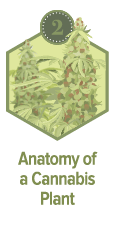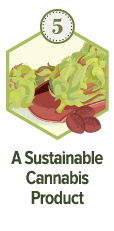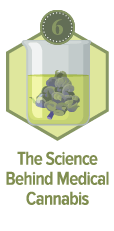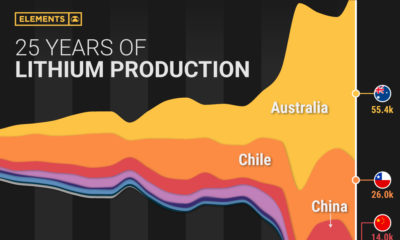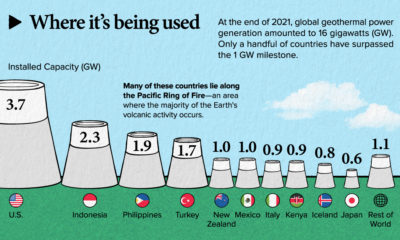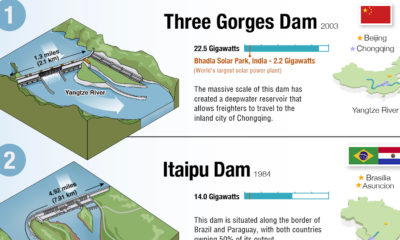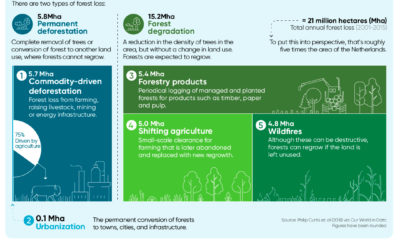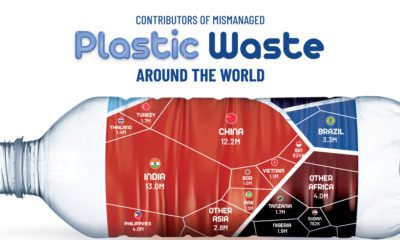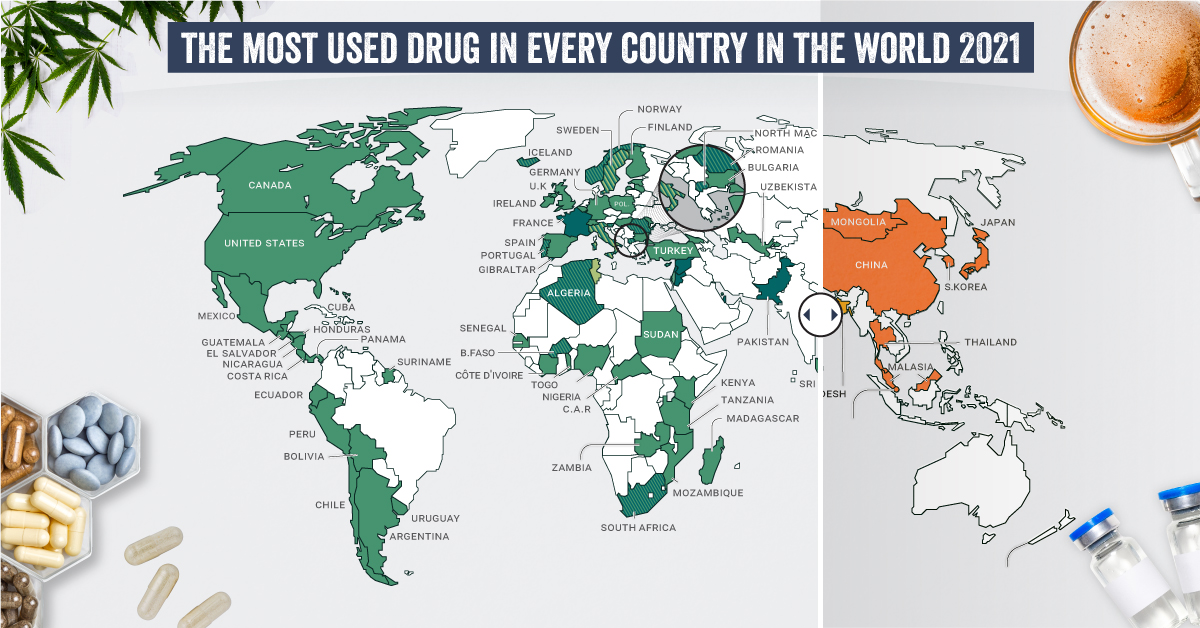Since 1980, heavy industrial activity has caused the doubling of CO2 emissions. As scientists warn of the lasting negative impacts this will have on the planet, nearly every industry is committing to sustainable practices to try to counteract this effect. Today’s infographic comes from The Green Organic Dutchman, and it demonstrates that while the business of cannabis isn’t always eco-friendly, there are several tried-and-tested ways to reduce its massive footprint.
A HEFTY PRICE TO PAY
Energy is the second-highest cost driver in cannabis cultivation after labor. There are two main culprits – lighting and HVAC systems (heating, ventilation, and air conditioning). Combined, they make up a whopping 89% of energy use in cannabis cultivation operations. Last year, legal cannabis cultivation was responsible for consuming 1.1 million MWh of electricity, and producing 472,000 tons of CO2 emissions. That’s enough to power 92,500 homes, and produce the same emissions as 92,660 cars per year. As legal cannabis production scales, this will only escalate. Much of this data can be attributed to how the plant is grown. Indoor cultivation is roughly 18 times more energy-intensive than outdoor cultivation, and produces 25 times the carbon emissions. On the other hand, outdoor production produces lower overall yield per square foot. Since it’s difficult to control the environment, impurities can also end up in the final product. That’s why many companies opt for a hybrid approach instead – balancing the benefits of precise control, with the use of natural light to lower production costs.
A GAME PLAN FOR SUSTAINABILITY
Many licensed producers are adopting a suite of strategies to relieve this environmental footprint.
Renewable energy Diversifying the energy sources for cannabis cultivation can reduce carbon emissions. Solar and wind are top choices among cultivators. LED lighting LED light bulbs are more than 60% more efficient than other types. They also produce barely any heat, lowering ventilation requirements. Water efficiency A single cannabis plant can use up to 23 liters of water per day. Water can be recycled and re-used through innovative techniques such as reverse osmosis. Packaging The plastic packaging often associated with cannabis products is a considerable contributor of waste. There are several alternatives, such as paper, glass, and tin. Each of these have their own benefits and drawbacks, depending on what they are used for.
Maximizing energy-efficiency has a domino effect not only on the planet, but on reduced operating costs. These savings can then be passed on to the buyer, which could prove to be a strong competitive advantage as the cannabis industry matures. Stay tuned for part 6 of this series, where we’ll delve into the scientific evidence for medical cannabis compounds. on Humans have a storied and complicated relationship with drugs. Defined as chemical substances that cause a change in our physiology or psychology, many drugs are taken medicinally or accepted culturally, like caffeine, nicotine, and alcohol. But many drugs—including medicines and non-medicinal substances taken as drugs—are taken recreationally and can be abused. Each country and people have their own relationship to drugs, with some embracing the use of specific substances while others shun them outright. What are the most common drugs that are considered generally illicit in different parts of the world? Today’s graphics use data from the UN’s World Drug Report 2021 to highlight the most prevalent drug used in each country.
What Types of Common Drugs Are Tracked?
The World Drug Report looks explicitly at the supply and demand of the international illegal drug market, not including commonly legal substances like caffeine and alcohol. Drugs are grouped by class and type, with six main types of drugs found as the most prevalent drugs worldwide.
Cannabis*: Drugs derived from cannabis, including hemp. This category includes marijuana (dried flowers), hashish (resin), and other for various other parts of the plant or derived oils. Cocaine: Drugs derived from the leaves of coca plants. Labeled as either cocaine salts for powder form or crack for cocaine processed with baking soda and water into rock form. Opioids: Includes opiates which are derived directly from the opium poppy plant, including morphine, codeine, and heroin, as well as synthetic alkaloids. Amphetamine-type Stimulants (ATS): Amphetamine and drugs derived from amphetamine, including meth (also known as speed), MDMA, and ecstasy. Sedatives and Tranquilizers: Includes other drugs whose main purpose is to reduce energy, excitement, or anxiety, as well as drugs used primarily to initiate or help with sleep (also called hypnotics). Solvents and Inhalants: Gases or chemicals that can cause intoxication but are not intended to be drugs, including fuels, glues, and other industrial substances.
The report also tracked the prevalence of hallucinogens—psychoactive drugs which strongly affect the mind and cause a “trip”—but no hallucinogens ranked as the most prevalent drug in any one country. *Editor’s note: Recreational cannabis is legal in five countries, and some non-federal jurisdictions (i.e. states). However, in the context of this report, it was included because it is still widely illicit in most countries globally.
The Most Prevalent Drug in Each Country
According to the report, 275 million people used drugs worldwide in 2020. Between the ages of 15–64, around 5.5% of the global population used drugs at least once. Many countries grouped different types of the same drug class together, and a few like Saudi Arabia and North Macedonia had multiple different drug types listed as the most prevalent. But across the board, cannabis was the most commonly prevalent drug used in 107 listed countries and territories: How prevalent is cannabis worldwide? 72 locations or more than two-thirds of those reporting listed cannabis as the most prevalent drug. Unsurprisingly these include countries that have legalized recreational cannabis: Canada, Georgia, Mexico, South Africa, and Uruguay.
How Common Are Opioids and Other Drugs?
Though the global prevalence of cannabis is unsurprising, especially as it becomes legalized and accepted in more countries, other drugs also have strong footholds. Opioids (14 locations) were the most prevalent drugs in the Middle-East, South and Central Asia, including in India and Iran. Notably, Afghanistan is the world’s largest producer of opium, supplying more than 90% of illicit heroin globally. Amphetamine-type drugs (9 locations) were the third-most common drugs overall, mainly in East Asia. Methamphetamine was the reported most prevalent drug in China, South Korea, and Japan, while amphetamine was only the most common drug in Bangladesh. However, it’s important to note that illicit drug usage is tough to track. Asian countries where cannabis is less frequently found (or reported) might understate its usage. At the same time, the opioid epidemic in the U.S. and Canada reflects high opioid usage in the West. As some drugs become more widespread and others face a renewed “war,” the landscape is certain to shift over the next few years.

